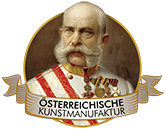


British art in the 17th century seems unremarkable and colorless. It seems as if the painters in this period needed a period of rest in terms of artistic development. With the turn of the century, a sparkle enters the European art world, whose rays even the painters of the island kingdom cannot escape. France and Germany revel in the splendour of the Rococo and enjoy the new playfulness. Thomas Gainsborough enchanted English society with charming portraits and luminous landscapes. Gainsborough pioneered the blossoming of English painting and became the source of inspiration for the next generation of artists, including Julius Caesar Ibbetson. Ibbetson devoted himself to landscape painting, which he often furnished with a decidedly rich figurative staffage. His subjects reflect everyday life with the same attention to detail as the painter captured illustrious pastimes. Julius painted the goings-on of a washing day by the river with the same intensity as he approached the booty of the smugglers on the Isle of Wight. Ibbetson created watercolour oil paintings that caught the attention of contemporary artists for their delicacy and fidelity to the line.
Julius Ibbetson was a painter who served a broad artistic spectrum. He underwent training with a marine painter and showed at a young age that he carried out his activities with exceptional thoroughness. In addition to painting, Julius devoted himself to writing. His first publications were manuals on painting. Ibbetson's texts stand out for their high entertainment value. Flowing prose also dominates the correspondence that the artist conducted with his patrons. Ibbetson stood out from the crowd of his often dour contemporaries because of his cheerful attitude, and he became a valued and welcome member of the British art scene. His works soon served as models for novel illustrations. An art form that Ibbetson delved into and added to his portfolio alongside painting landscapes and portraits.
In the late 18th century, the art world was feverishly anticipating a very special event. The first exhibition of contemporary art was opened by the Royal Academy of Arts in 1769. The annual event featured the works of members of the Academy in the summer exhibition. In addition, independent artists who were under the benevolent influence of the Association were allowed to exhibit. Hundreds of paintings hung close together on the walls of the premises, attracting collectors and patrons as well as the interested public. Julius Ibbetson presented his works here every year and established contacts with clients. Quite a few commissions involved travel, and Julius absorbed the impressions of foreign worlds with the same intensity with which he painted. He accompanied the British ambassador to Peking and devoted himself to the animal and plant world there as well as to the industrially drawn landscapes in Wales. The artist never used his middle name, which, according to autobiographical statements, he received through a Caesarean birth.

British art in the 17th century seems unremarkable and colorless. It seems as if the painters in this period needed a period of rest in terms of artistic development. With the turn of the century, a sparkle enters the European art world, whose rays even the painters of the island kingdom cannot escape. France and Germany revel in the splendour of the Rococo and enjoy the new playfulness. Thomas Gainsborough enchanted English society with charming portraits and luminous landscapes. Gainsborough pioneered the blossoming of English painting and became the source of inspiration for the next generation of artists, including Julius Caesar Ibbetson. Ibbetson devoted himself to landscape painting, which he often furnished with a decidedly rich figurative staffage. His subjects reflect everyday life with the same attention to detail as the painter captured illustrious pastimes. Julius painted the goings-on of a washing day by the river with the same intensity as he approached the booty of the smugglers on the Isle of Wight. Ibbetson created watercolour oil paintings that caught the attention of contemporary artists for their delicacy and fidelity to the line.
Julius Ibbetson was a painter who served a broad artistic spectrum. He underwent training with a marine painter and showed at a young age that he carried out his activities with exceptional thoroughness. In addition to painting, Julius devoted himself to writing. His first publications were manuals on painting. Ibbetson's texts stand out for their high entertainment value. Flowing prose also dominates the correspondence that the artist conducted with his patrons. Ibbetson stood out from the crowd of his often dour contemporaries because of his cheerful attitude, and he became a valued and welcome member of the British art scene. His works soon served as models for novel illustrations. An art form that Ibbetson delved into and added to his portfolio alongside painting landscapes and portraits.
In the late 18th century, the art world was feverishly anticipating a very special event. The first exhibition of contemporary art was opened by the Royal Academy of Arts in 1769. The annual event featured the works of members of the Academy in the summer exhibition. In addition, independent artists who were under the benevolent influence of the Association were allowed to exhibit. Hundreds of paintings hung close together on the walls of the premises, attracting collectors and patrons as well as the interested public. Julius Ibbetson presented his works here every year and established contacts with clients. Quite a few commissions involved travel, and Julius absorbed the impressions of foreign worlds with the same intensity with which he painted. He accompanied the British ambassador to Peking and devoted himself to the animal and plant world there as well as to the industrially drawn landscapes in Wales. The artist never used his middle name, which, according to autobiographical statements, he received through a Caesarean birth.
Page 1 / 2








